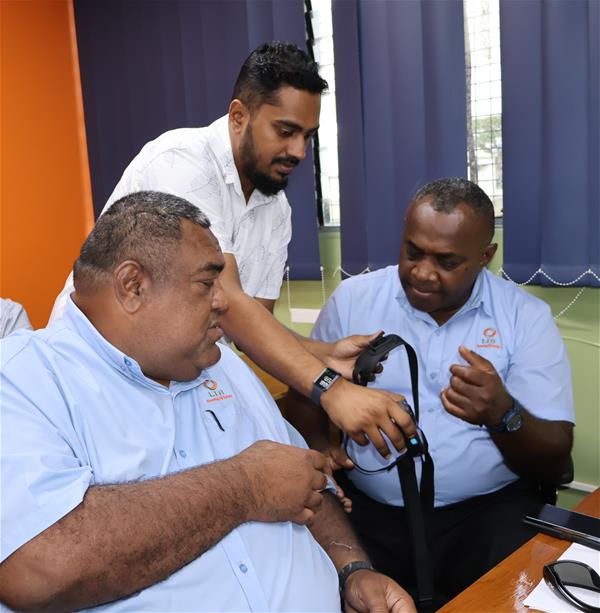SUVA, Fiji (8th October 2025): As part of its ongoing efforts to improve road safety enforcement, Land Transport Authority (LTA) Road Enforcement Officers will soon be equipped with body-worn cameras, commonly known as bodycams.
LTA Chief Executive Officer Irimaia Rokosawa says five body cameras will be introduced in the initial phase and rotated among enforcement officers across all regions.
Mr Rokosawa said the initiative represents a significant step forward in modernising enforcement practices while strengthening public confidence, transparency, and accountability in the Authority’s work.
The CEO highlighted that the introduction of bodycams was guided by three key objectives, including providing a clear and reliable record of officer–public interactions during enforcement duties, to protect both LTA officers and members of the public by reducing the potential for disputes and misunderstandings, as well as enhancing professionalism, accountability, and trust in the way the Authority delivered its services.
“Enforcement is a vital part of road safety. It is about saving lives and ensuring every road user behaves responsibly. The bodycams will not only support our officers in carrying out their roles more effectively, but also give the public reassurance that their rights and safety are protected during interactions with enforcement teams,” Mr Rokosawa said.
“The bodycams are small, portable cameras that will be worn on the uniforms of LTA enforcement officers. They are designed to record both video and sound during officer–public engagements, and store recordings securely to prevent unauthorised access or misuse.”
Mr Rokosawa said the bodycams would be activated strictly during official enforcement duties.
He said the body cameras would not operate continuously, nor would it intrude on the privacy of road users outside of enforcement contexts.
“Its sole purpose is to provide a factual and impartial record of interactions, particularly in situations where disputes or safety concerns may arise,” the CEO said.
“We wish to assure members of the public that the bodycams are not a breach of personal privacy as the devices are activated only during the course of enforcement duties, such as issuing a Traffic Infringement Notice, conducting roadside checks, or responding to road safety concerns.
“Our officers will also inform members of the public they interact with on the purpose of the body cameras. All recordings will be handled with strict confidentiality, stored securely, and used only for official LTA purposes.
“This ensures the information is protected while still serving as a valuable resource to improve service delivery, officer conduct, and public safety outcomes.
“The rollout of bodycams is about fairness and protection – for both sides. They safeguard our officers from false accusations while also ensuring the public is treated with respect, transparency, and professionalism. It is about creating trust and confidence in how enforcement is carried out.”
Mr Rokosawa said the introduction of bodycams was part of the Authority’s strategy to strengthen road safety, modernise enforcement operations, and reduce the number of road crashes and fatalities in Fiji.
“The cameras are here to protect both you and our officers. They will make our enforcement work more transparent, and they will also help us learn and improve where needed. We ask that the public see this as a positive step forward and continue to work with us to make Fiji’s roads safer for all,” the CEO said.
The rollout of body cameras will begin next week in the Central Eastern Division, with future implementation planned for the Western and Northern Divisions.
